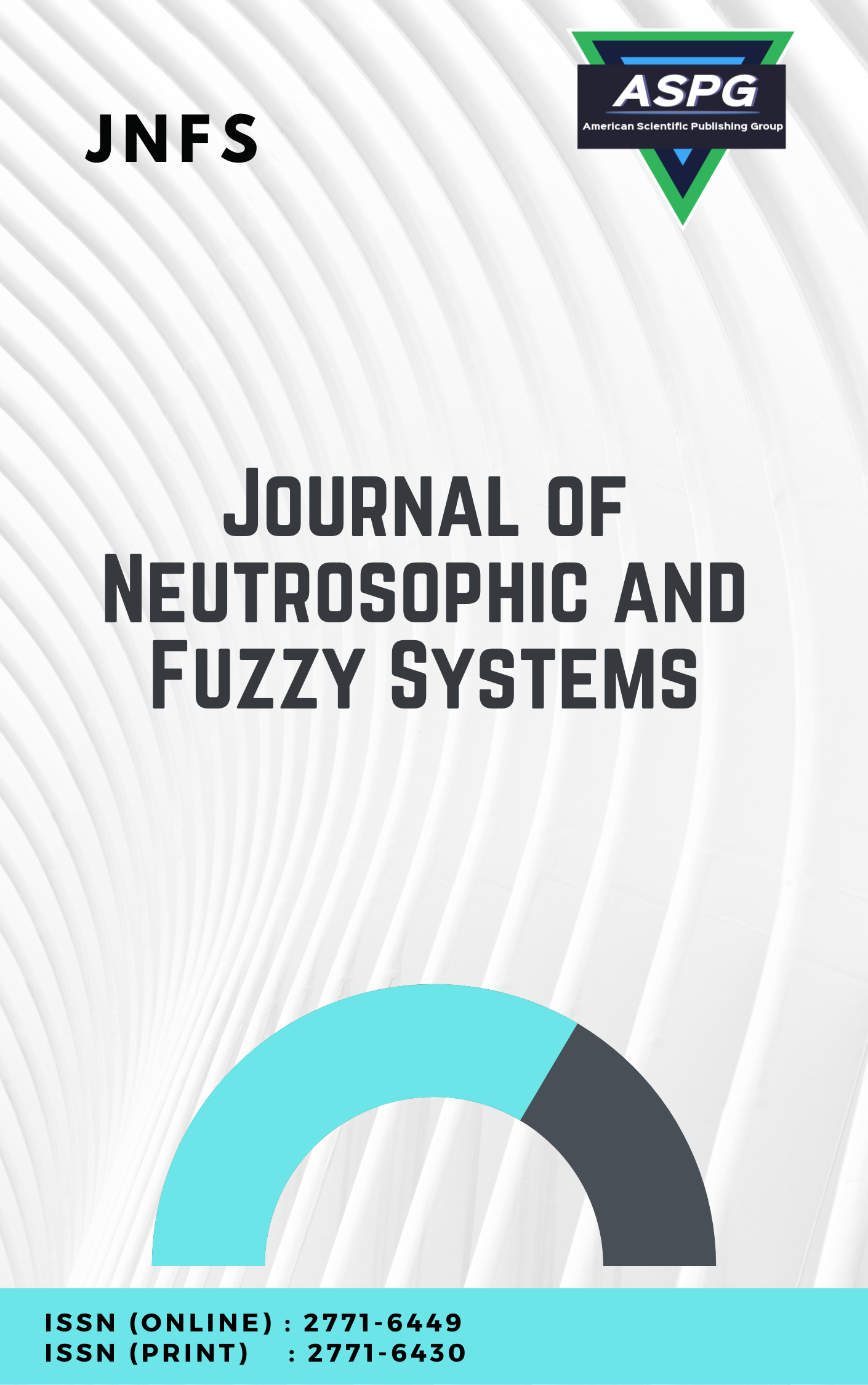

In this paper the author will illustrate some basic mathematics about π and its computation in comparison of both Indian Knowledge System as well as others. Same time the infinite series computation and its application is discussed with a pseudo code for decision making process. It is believed that this computation will be helpful for early career researcher for various applications of pie in knowledge processing tasks.
Read MoreDoi: https://doi.org/10.54216/JNFS.080101
Vol. 8 Issue. 1 PP. 08-17, (2024)
The main goal of this work is to study the solutions of linear congruencies in the standard and n-standard fuzzy number theoretical systems, where we present necessary and sufficient conditions for fuzzy congruence to be solvable in these systems. Also, we provide the conditions of fuzzy nilpotency and fuzzy invertibility modulo integers with many illustrated examples. On the other hand, we suggest an algorithm to generate fuzzy Pythagoras triples and fuzzy Pythagoras quadruples in the standard fuzzy number theoretical system.
Read MoreDoi: https://doi.org/10.54216/JNFS.080102
Vol. 8 Issue. 1 PP. 18-22, (2024)
The 3-cyclic refined neutrosophic roots of unity are exactly the solutions of the Diophantine equation in the 3-cyclic refined neutrosophic ring of integers . This paper is dedicated to finding all 3-cyclic refined neutrosophic Diophantine roots of unity, where it proves that there exist only three solutions for the case of odd order (n), and twelve different solutions for the case of even order (n). On the other hand, the group generated from all solutions will be classified as a finite abelian group with direct products of finite cyclic groups.
Read MoreDoi: https://doi.org/10.54216/JNFS.080103
Vol. 8 Issue. 1 PP. 23-30, (2024)
An element X in a ring R is called idempotent if it equals its square. In this paper, we study the idempotent elements in the 3-cyclic refined neutrosophic ring of integers and 4-cyclic refined neutrosophic ring of integers, where we compute all idempotents in those two rings by solving many different linear Diophantine systems which are generated directly from their the algebraic structure. On the other hand, we use the same Diophantine systems to compute all 2-potent 3-cyclic, and 4-cyclic refined neutrosophic integer elements.
Read MoreDoi: https://doi.org/10.54216/JNFS.080104
Vol. 8 Issue. 1 PP. 31-38, (2024)
Plithogenic algebraic rings are considered novel generalizations of neutrosophic rings. This paper is dedicated to studying and solving many different types of symbolic 2-plithogenic linear algebraic equations where dual, split-complex, and weak fuzzy linear equations of symbolic 2-plithogenic type will be solved and discussed. Also, we illustrate many numerical examples to clarify the validity of our work.
Read MoreDoi: https://doi.org/10.54216/JNFS.080105
Vol. 8 Issue. 1 PP. 39-45, (2024)
In this study, we introduce Marshall-Olkin type II class of distributions within the neutrosophic and plithogenic framework. We provide the formal expressions for the probability density function and derive the cumulative distribution function. As a specific instance, we examine the generalization of the exponential distribution in both neutrosophic and plithogenic forms according to this new class, presenting the probability density function and deriving the cumulative distribution function for this case. Furthermore, we propose an algorithm for generating random numbers based on this distribution. Additionally, we estimate its parameters using maximum likelihood and validate the results through a simulation study, demonstrating the efficiency of the calculated parameters. We also investigate the asymptotic properties, including unbiasedness and consistency.
Read MoreDoi: https://doi.org/10.54216/JNFS.080106
Vol. 8 Issue. 1 PP. 46-64, (2024)